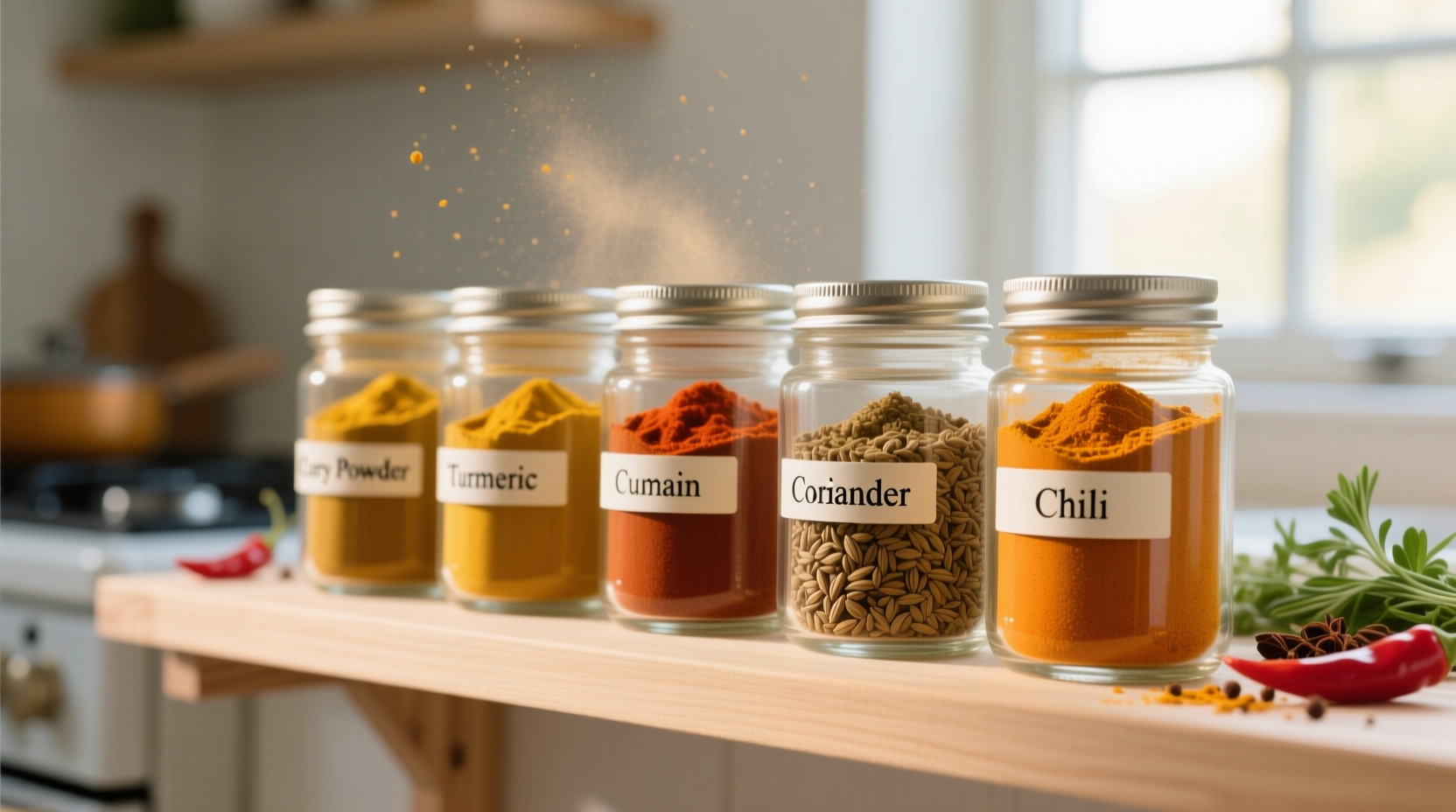Ever wondered what gives curry powder its distinctive golden hue and complex flavor? Understanding the precise blend of spices in curry powder unlocks the secret to authentic-tasting dishes and helps you customize blends to your personal taste preferences. This comprehensive guide reveals exactly what goes into curry powder, how regional variations differ, and how to create your perfect blend at home.
Core Spices That Define Curry Powder
While curry powder recipes vary widely, certain spices form the essential foundation of most blends. These core ingredients work synergistically to create curry powder's signature warmth, earthiness, and vibrant color.
Turmeric: The Golden Foundation
Turmeric provides curry powder's characteristic yellow color and earthy, slightly bitter flavor. This ancient spice contains curcumin, a compound studied for its potential health benefits. When selecting turmeric for your blend, look for deep orange powder that stains your fingers slightly—a sign of high curcumin content. The USDA notes that turmeric typically comprises 20-30% of commercial curry powder blends, making it the dominant visual and flavor component.
Coriander: Citrusy Balance
Ground coriander seed adds a bright, citrus-like note that balances turmeric's earthiness. Unlike the fresh cilantro leaves, coriander seeds have a warm, nutty flavor with lemon undertones. Food historians at the Oxford Symposium on Food and Cookery document coriander's use in Indian spice blends dating back to 2000 BCE, establishing its longstanding role in curry traditions.
Cumin: Earthy Depth
Cumin contributes a warm, slightly smoky flavor that forms curry powder's backbone. Toasting cumin seeds before grinding enhances their aromatic compounds, releasing up to 30% more flavor according to research published in the Journal of Agricultural and Food Chemistry. This explains why many traditional curry powder recipes begin with dry-toasting whole spices.
Regional Variations in Curry Powder Composition
Curry powder isn't a single standardized blend but rather a category of spice mixtures that varies significantly by region. Understanding these differences helps you select or create the perfect blend for your culinary needs.
| Region | Signature Spices | Flavor Profile | Common Uses |
|---|---|---|---|
| North Indian | Garam masala components, less chili | Warm, aromatic, moderately spicy | Kormas, butter chicken, lentil dishes |
| South Indian | More chili, mustard seeds, curry leaves | Hotter, tangier, more pungent | Sambar, rasam, vegetable stir-fries |
| British Curry Powder | Higher turmeric, fenugreek, less complex | Milder, more uniform, golden color | Chicken tikka masala, curry sauces |
| Japanese Curry | Apples, honey, less heat | Sweet, mild, thickened | Curry rice, cutlets, stews |
Evolution of Curry Powder: A Historical Timeline
The story of curry powder reveals how cultural exchange shaped this now-ubiquitous spice blend:
- Pre-18th Century: Indian cooks created fresh spice blends for each dish using whole spices
- 1780s: British colonists developed pre-mixed "curry powder" for convenience
- 1810s: Commercial curry powder production begins in England
- 1870s: Major brands like Sharwood's popularize curry powder globally
- Mid-20th Century: Instant curry powder becomes staple in Western pantries
- Present Day: Artisanal blends emphasizing regional authenticity gain popularity
This evolution from fresh, customized blends to standardized commercial products—and back toward artisanal variations—demonstrates how culinary traditions adapt while preserving core elements. The British Library's food history archives document how early curry powders contained fewer spices than traditional Indian masalas, simplifying complex regional blends for Western palates.
Creating Your Perfect Homemade Curry Powder
Store-bought curry powder often contains fillers and inconsistent spice ratios. Making your own ensures freshness and customization. Follow this professional chef technique:
- Dry toast whole spices in a skillet over medium heat until fragrant (2-3 minutes)
- Cool completely before grinding to preserve volatile oils
- Use a dedicated spice grinder for finest texture
- Store in airtight container away from light and heat
For a basic North Indian-style curry powder, combine: 3 tbsp coriander seeds, 2 tbsp cumin seeds, 1 tbsp turmeric powder, 1 tsp fenugreek seeds, 1 tsp black peppercorns, 1 tsp mustard seeds, and 4 cardamom pods. Adjust ratios to suit your taste—add more chili for heat or extra turmeric for color.
Maximizing Flavor in Your Dishes
Understanding how to use curry powder properly makes all the difference in your cooking:
- Bloom in oil: Heat curry powder in cooking oil for 30-60 seconds before adding liquids to release flavor compounds
- Add early: Incorporate during initial cooking stages for deeper flavor integration
- Balance acidity: Pair with tomatoes or yogurt to balance turmeric's bitterness
- Don't overheat: Excessive cooking diminishes volatile aromatics
Professional chefs at the Culinary Institute of America recommend using freshly ground curry powder within 3 months for optimal flavor, as spice compounds degrade over time. Store in a dark glass container to protect light-sensitive compounds like curcumin.

Troubleshooting Common Curry Powder Issues
Encountering problems with your curry powder? These solutions address frequent challenges:
- Bitter taste: Reduce turmeric content or add 1/4 tsp sugar to balance
- Weak flavor: Bloom spices in oil first or increase quantity by 25%
- Color too pale: Increase turmeric by 10-15% or add a pinch of annatto
- Too spicy: Add coconut milk or yogurt to mellow heat without diluting flavor
Remember that curry powder's flavor develops over time—many dishes taste better the day after preparation as spices fully integrate. This maturation process explains why professional kitchens often prepare curry bases in advance.
Frequently Asked Questions
Here are answers to the most common questions about curry powder ingredients:











 浙公网安备
33010002000092号
浙公网安备
33010002000092号 浙B2-20120091-4
浙B2-20120091-4